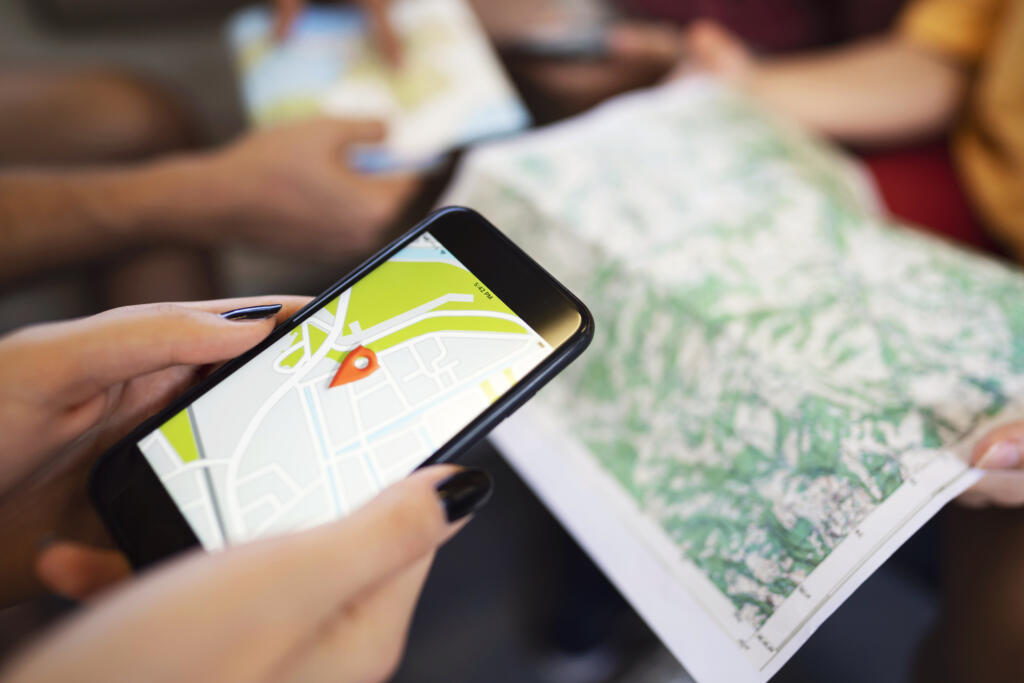BEND, Ore. — Despite having tried most outdoor activities, I’d never attempted the high-tech treasure hunt of geocaching, though I would stumble across caches all the time while out and about. I was ripe to give it a try.
Thinking there would only be a few to hunt down around Bend, I made an account on geocaching.com and took a look. I was stunned when I saw well over hundreds of colorful dots overlaid on a map of the area, including one deep red dot indicating a recent GeoTour launch.
Eager newbies and seasoned cachers alike could take in some of the great sights we have in Central Oregon by joining the Bend Arts, Culture & Adventure GeoTour, sponsored by The Bulletin and EO Media Group.
The event afforded locals and visitors alike a fun chance to get to know the area a little more and visit some Bend businesses for bonus points.
For those of you who still don’t know quite what geocaching is or who think it’s a thing that was all the rage in the mid-aughts but has since faded, now is a great time to check it out.
What is geocaching?
The actual act of geocaching is relatively simple: Someone hides a container with a log book or trinkets and marks the location of it with their GPS, then someone else finds said container by following the coordinates and any clues the hider has left.
In 2000, GPS technology was still on the rise, and enthusiasts were populating early internet message boards and email chains. On May 2 of that year, the “great blue switch” that controlled selective availability was flipped, meaning that GPS became “more responsive to civil and commercial users worldwide,” according to gps.gov.
For those enthusiasts, more accuracy meant a lot, and one GPS user decided to test it out the next day. Dave Ulmer, of Beaver Creek, hid a navigational target in the woods, according to geocaching.com, and put the coordinates online, calling it the “Great American GPS Stash Hunt.” Ulmer filled a black bucket with a logbook and some prizes including some videos, books, software and a slingshot with the intent that whoever found the stash would take something and leave something behind for the next person.
Three days later, two people found the bucket and posted about it, confirming the accuracy of their system, and geocaching was born.
Nowadays there are a few different types of geocaches that have evolved from that initial one, including but not limited to letterboxes (just a logbook), mystery (the location is not the cache but has a puzzle or clue to solve in order to find the cache elsewhere), multi-caches (the initial point has hints to other caches in the area not on the map) and traditional take-a-prize, leave-a-prize caches.
Try it yourself
Picking up geocaching really doesn’t take anything but an app download, your phone and zeal for the hunt. Geocaching.com seems to be the most complete and user-friendly website to grab information on nearby and far-flung caches, and you can make an account for free (some options require a premium paid subscription).
When I logged in for the first time, I was struck by not only the large number of caches in the Bend area, but also the creative way in which geocachers have distributed their caches.
Some caches are in a series plotted in designs like hearts or letters, others are longer — much longer.
Along the George Millican Road are more than 206 caches on the east side of the road, from Millican to Prineville. The user globaltrecker&putter states in their description the challenge of “How many can you do in a day?” For me, it was only two.
I don’t believe I’ve ever driven George Millican Road before. Maybe a part of it but for me it was always just a dry and dusty turn-off on the way from Bend to Burns that I would always marvel at because, if you took it, you’d somehow end up in Prineville.
But the drive along the sleepy stretch of High Desert road offered some great views and fun hunting for caches along the way. And that seems to be part of the allure of this hobby — seeing the sights, in addition to feeling like a pirate searching for buried treasure.
I don’t want to spoil the hunt any more by revealing too many hints for geocaches I found, but not all of them are easy. With my trusty iPhone in hand, I was led directly to some, while others eluded me completely, even though I was supposedly on top of them. For the ones I did find, though, there was a certain endorphin rush that added to the enjoyment of the day.
Wherever the road, trail or geocache takes you, knowing you found the “treasure” on the map is an added little bonus to a day of adventuring.



